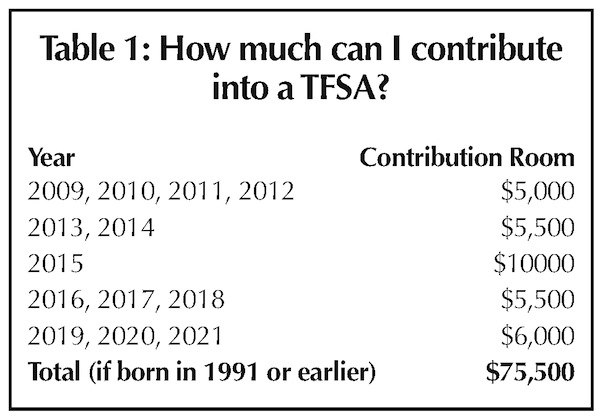In December, our federal government offered a hastily assembled tax break that lasted until mid-February. The most memorable part of it was that the Canada Revenue Agency (CRA) chose to exempt “Hanukkah trees or bushes” from taxes. Your reaction might be like my twins’ outcry when I picked them up from junior high. We discussed it on the way home.
“Did they talk to an actual Jewish person?” they wondered. “Couldn’t they have exempted Hanukkah menorahs and candles? Judaica?
“Don’t they realize,” my kids added, “that anybody who is buying a tree is not doing a Jewish thing?”
I had similar thoughts. There are Jews who, for various reasons, decorate with Christmas items, but it’s not a Jewish thing.
I often write about how Jewish traditions, laws and texts apply to us, as Canadian Jews. This time, I reflected on how Canadian law applies to us, instead. The Hanukkah bush incident on its own wouldn’t have resulted in more than momentary annoyance or a wry chuckle if it had been a one-off mistake.
I thought of this while considering the recent US hoopla around eradicating DEI (diversity, equity and inclusion) policies. Canadians consider diversity part of our strength. Of course, there are efforts to uphold our strength in diversity amid the new US presidential activity. Historically, I’ve been a fan of DEI. It uplifts minorities who deserve a fair chance in a world that touts itself as a meritocracy but, in truth, privileges some far above others.
After Oct. 7, 2023, it became clear that Canadian DEI does nothing to support Jewish people, although we’re a minority in Canada. More than once, my husband, a professor, was forced to point out surveys, embraced by his university, that left no way to identify as Jewish. In one human resources gaffe, the survey told Jews to identify as “white European.” My husband, whose father was born in a displaced persons camp in Germany in 1946, had no intention of pretending his murdered and displaced ancestors were considered equal or “white” citizens in Europe.
There are more anecdotes that one could share. Jews are a minority in Canada. The current DEI narrative doesn’t match who we are.
All this came up when reading the newly released tariff proposal compiled by the Canadian government. You could get bogged down in the definitions of “offal,” “margarine” and other details. I skimmed quickly, wondering how this would affect our Passover grocery shopping. Then I got stuck on the following entries in the backgrounder that was proposed to go into effect Feb. 4 and then was quickly postponed for 30 days.
Specifically, I got lost in item numbers 6117.10.10, 6117.90.10, 6214.10.10, 6214.20.10 and 6214.30.10. All these objects, associated with shawls, stoles, scarves and mantillas, and parts thereof, specifically list “prayer shawls.” These numbers relate to whether the garment is made, in whole or in part, of wool, silk or synthetics, and knitted or crocheted.
In recent years, it’s true that some older Christian women, usually in church groups, have knit shawls while praying. They gift these “prayer shawls” to those they pray for in their community. There isn’t much cross-border trade in these items. These works of prayer are gifts and are rarely for sale.
It’s easier to jump to the other definition. Tallits, tallesim, tallis, tallitot – however you call it, Jewish garments with tzitzit, made of wool, silk or synthetics, are called prayer shawls in English. Having recently searched for these for my twins’ b’nai mitzvah, many of the biggest Judaica shops that sell these are in the United States. Of course, one can also buy beautiful tallits from Israel. Due to the exchange rate, slow postage times and difficulty of shopping online, we bought our kids’ tallits locally at the synagogue gift shop, but some of those items came from US suppliers.
I wove my tallit for my bat mitzvah. I’m capable of weaving others, but because my kids haven’t grown to their adult sizes, our family decided not to invest too much time and money into their current tallits. What fits now at age 13 won’t work for them as adults. However, the new tariffs indicate that, although Jews are only 1% of the Canadian population, our ritual prayer items apparently deserve “special mention” and tariff fees. Note that, if you can locate a cotton tallit, it might not fit in the tariff schedule yet, but this list and its timeline are open to revision.
Where does this leave us? I’m wondering who compiled the two-month tax break and the tariff list. Someone on these task forces feels the need to single out and “include” Jews without consulting any Jews. The effort towards “inclusion” feels downright uncomfortable. It leaves Jewish Canadians feeling othered. We’re the small minority specifically allowed to purchase “Hanukkah bushes” without tax. Our tallits are mentioned five times in the cross-border tariff battles.
While we dangle in this awkward space, it brings up other issues. How many “Hanukkah bushes” or tallits do the CRA and tariff writers think we buy each year? As a small minority, even if we all bought these items every year (which we don’t), it would amount to nothing much. Something smacks of bias. The notion that we have outsized purchasing power or large numbers is part of a greater set of antisemitic tropes.
Earlier this week, I attended an online panel on antisemitism that included MP Ben Carr, Manitoba MLA Mike Moroz, Belle Jarniewski, executive director of the Jewish Heritage Centre of Western Canada, and Avrom Charach, a longtime Winnipeg Jewish leader and activist who has been cleaning up antisemitic graffiti. Everyone on the panel concluded that education and outreach to non-Jewish Canadians helps, because eradicating ignorant hate takes education and allies. The panel also suggested that appropriate federal and provincial legislation could help bring change.
Mentioning these strange tax cuts and tariff proposals could help educate Canadian government officials. Their efforts to single out the Jewish community have backfired. Let’s hope that future legislation doesn’t create other fake Jewish rituals or charge special tariffs on Jewish ritual items. Such actions aren’t supportive of Canadian diversity. Canada can do better.
Joanne Seiff has written regularly for the Winnipeg Free Press and various Jewish publications. She is the author of three books, including From the Outside In: Jewish Post Columns 2015-2016, a collection of essays available for digital download or as a paperback from Amazon. Check her out on Instagram @yrnspinner or at joanneseiff.blogspot.com.







